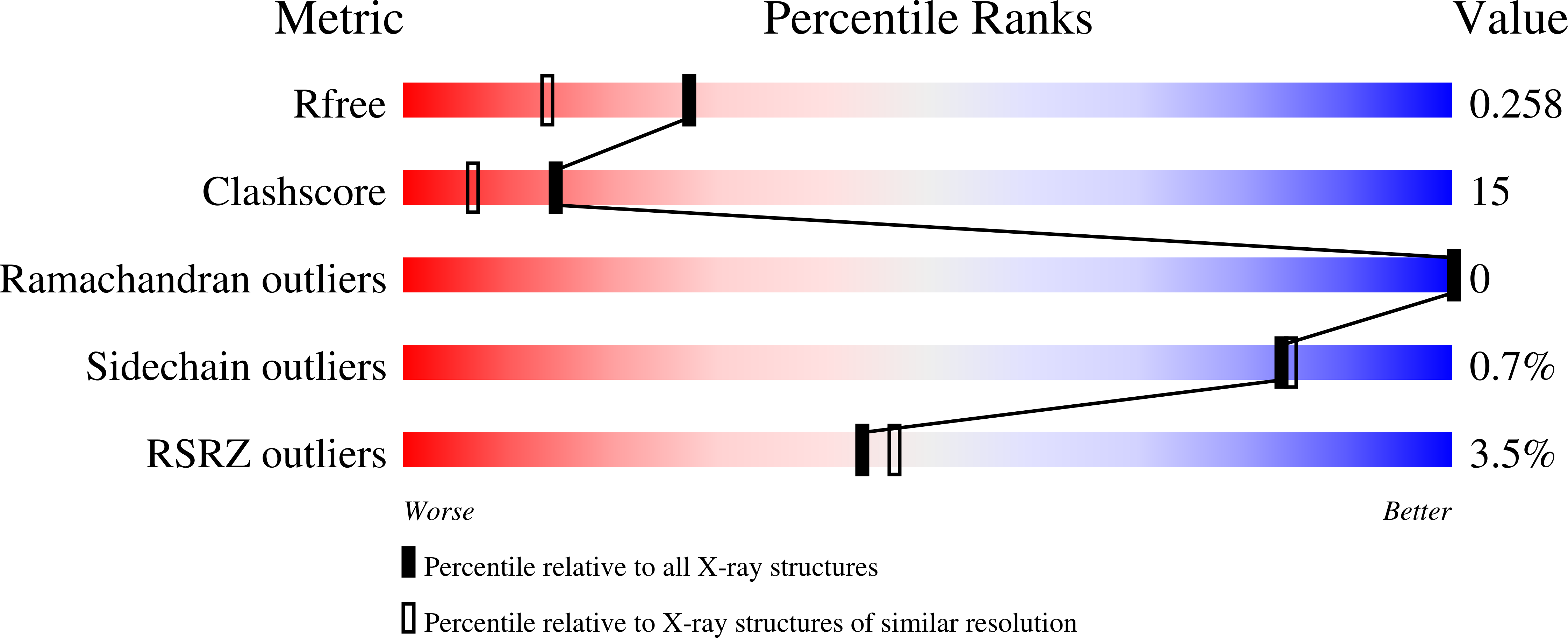Structural Basis for Chitotetraose Coordination by CGL3, a Novel Galectin-Related Protein from Coprinopsis cinerea
Waelti, M.A., Walser, P.J., Thore, S., Gruenler, A., Bednar, M., Kuenzler, M., Aebi, M.(2008) J Mol Biol 379: 146-159
- PubMed: 18440554
- DOI: https://doi.org/10.1016/j.jmb.2008.03.062
- Primary Citation of Related Structures:
2R0F, 2R0H - PubMed Abstract:
Recent advances in genome sequencing efforts have revealed an abundance of novel putative lectins. Among these, many galectin-related proteins, characterized by many conserved residues but intriguingly lacking critical amino acids, have been found in all corners of the eukaryotic superkingdom. Here we present a structural and biochemical analysis of one representative, the galectin-related lectin CGL3 found in the inky cap mushroom Coprinopsis cinerea. This protein contains all but one conserved residues known to be involved in beta-galactoside binding in galectins. A Trp residue strictly conserved among galectins is changed to an Arg in CGL3 (R81). Accordingly, the galectin-related protein is not able to bind lactose. Screening of a glycan array revealed that CGL3 displays preference for oligomers of beta1-4-linked N-acetyl-glucosamines (chitooligosaccharides) and GalNAc beta 1-4GlcNAc (LacdiNAc). Carbohydrate-binding affinity of this novel lectin was quantified using isothermal titration calorimetry, and its mode of chitooligosaccharide coordination not involving any aromatic amino acid residues was studied by X-ray crystallography. Structural information was used to alter the carbohydrate-binding specificity and substrate affinity of CGL3. The importance of residue R81 in determining the carbohydrate-binding specificity was demonstrated by replacing this Arg with a Trp residue (R81W). This single-amino-acid change led to a lectin that failed to bind chitooligosaccharides but gained lactose binding. Our results demonstrate that, similar to the legume lectin fold, the galectin fold represents a conserved structural framework upon which dramatically altered specificities can be grafted by few alterations in the binding site and that, in consequence, many metazoan galectin-related proteins may represent lectins with novel carbohydrate-binding specificities.
Organizational Affiliation:
Institute of Microbiology, ETH Zürich, Wolfgang-Pauli-Str. 10, CH-8093 Zürich, Switzerland.
















